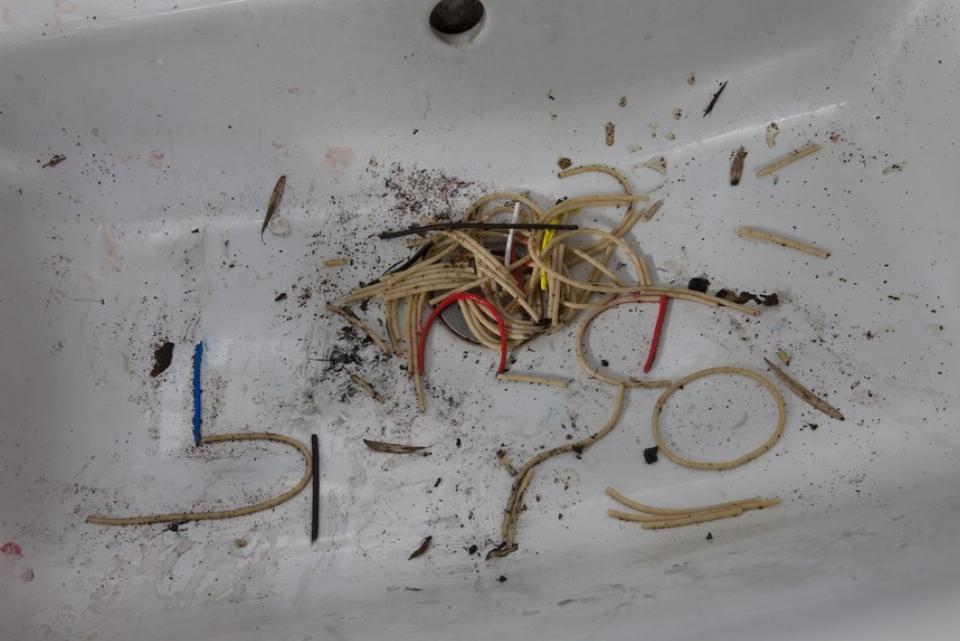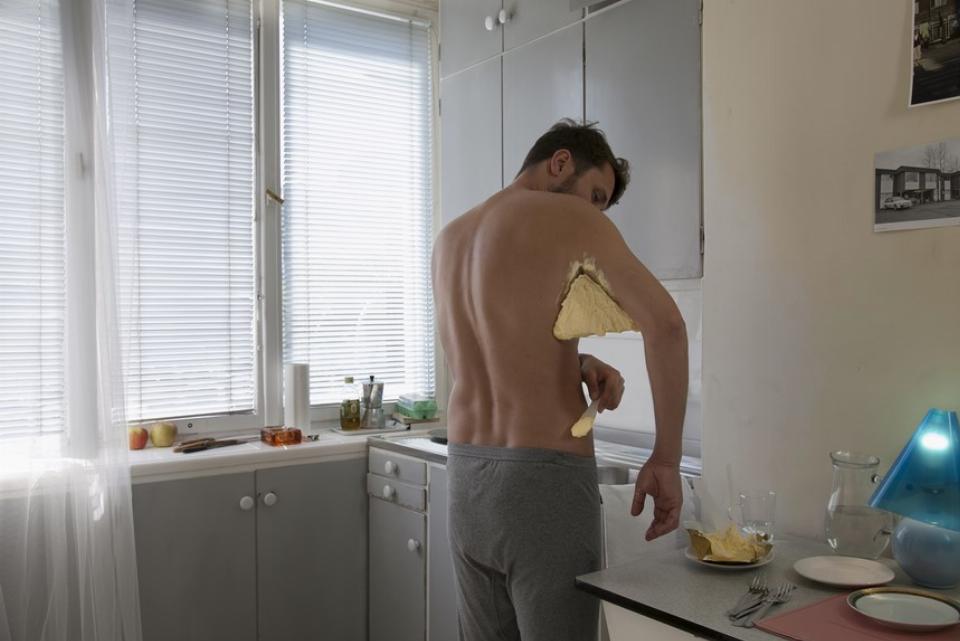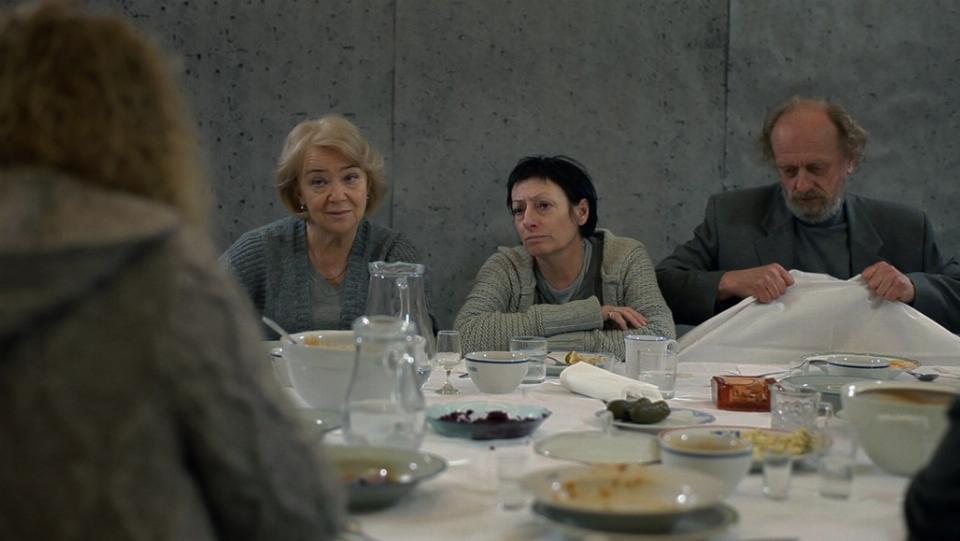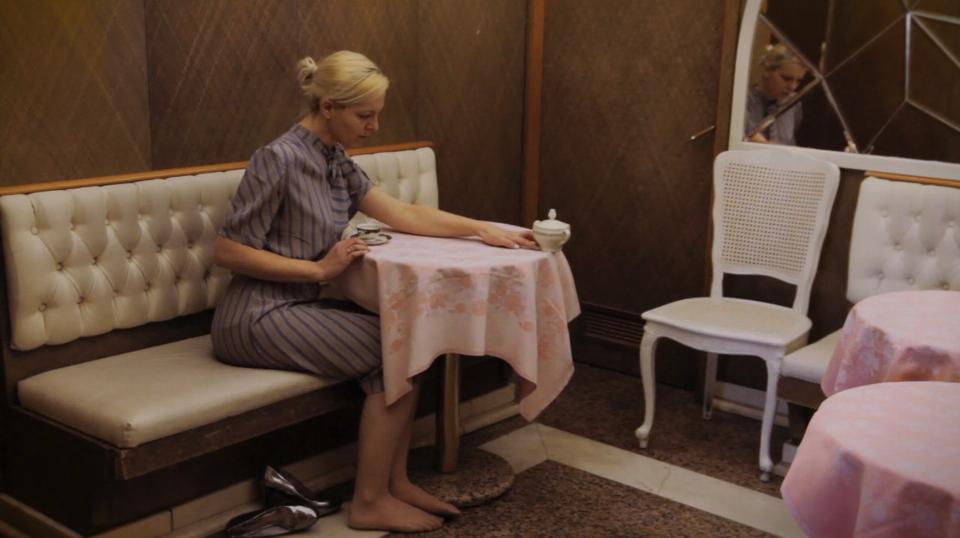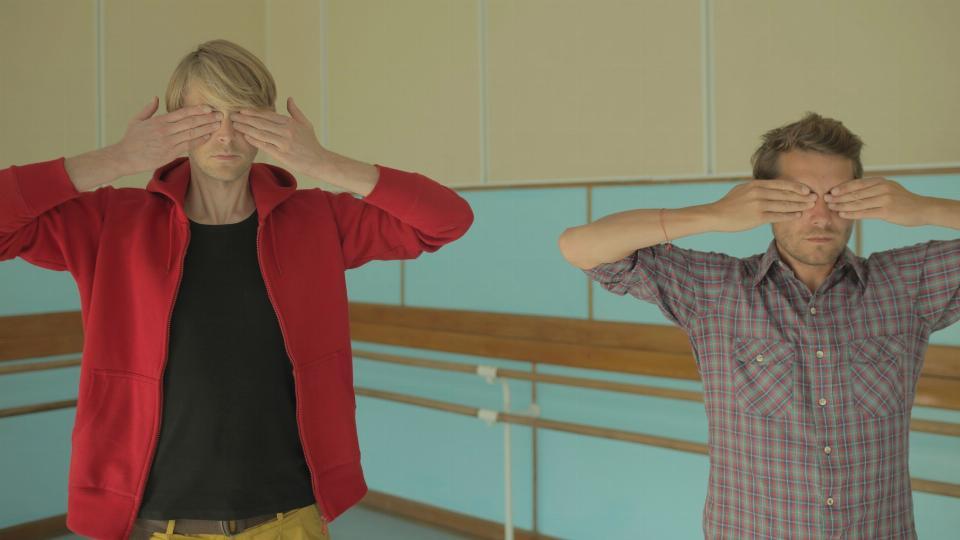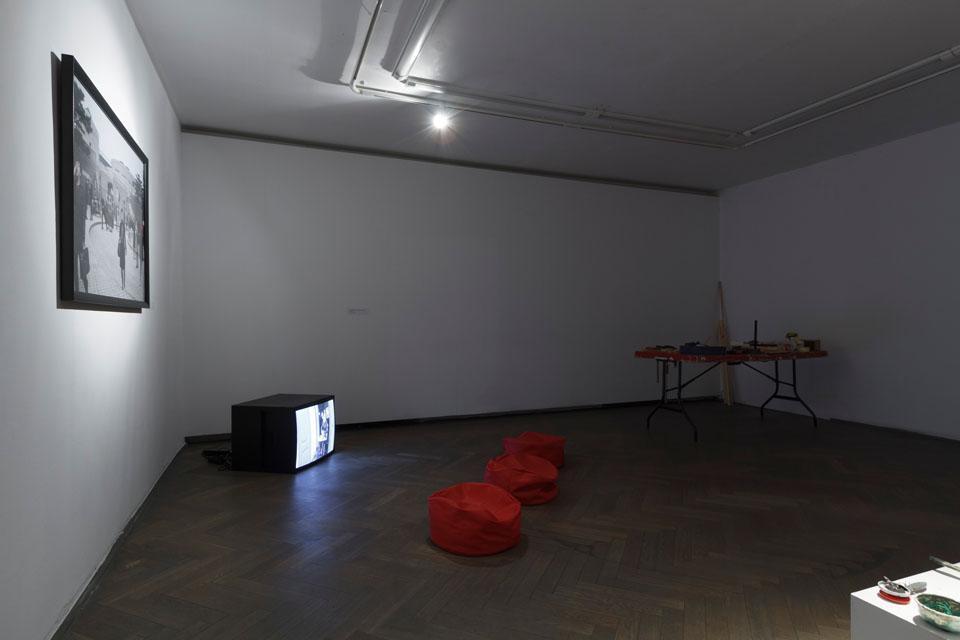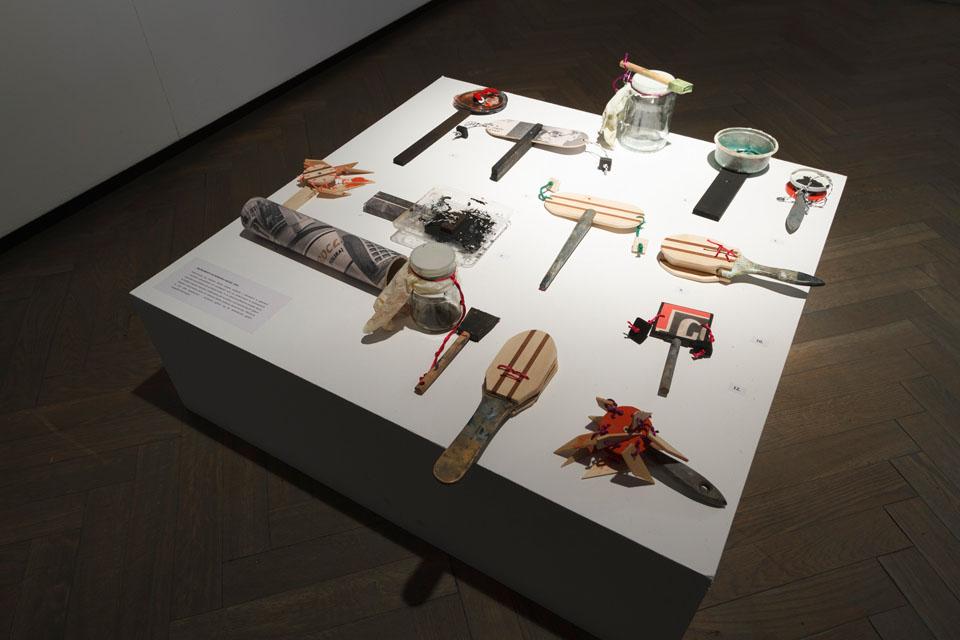Archiwalna
KAROLINA BREGUŁA – Renovation, a Word as Disgusting as a Cockroach
29.01.2016 – 03.03.2016
Arsenal Gallery, ul. A. Mickiewicza 2, Białystok
Agata Chinowska
Karolina Breguła. Renovation, a Word as Disgusting as a Cockroach
The Efficiency of Art
The figure of an artist/organizer, popular in the 1920s, was a product of the concept of social and political practices related to the idea of utilitarianism, or the efficiency of art. In 1927, Mieczysław Szczuka – an exponent of the trend, a constructor of the new order and one of the most important Polish constructivists – wrote in his manifesto titled Art and Reality: “The artist has begun to think. He has realized the emptiness of his position on social issues. The artist is breaking out of the confines of today’s system, he desires and searches for practical goals, a practical application of his work. He does not want to be an empty “ornament” of society, he wishes to participate in the organization of life.”[1] One of the main objectives of the manifesto was to explain the reasons for social isolation of the artist as well as for incomprehension of art. It seems worth mentioning that Szczuka’s artistic doctrine was dominated by the demand for “indivisibility of the problems of art and social problems.”
At first, bringing up the idea of utilitarianism as Szczuka understood it in relation to Karolina Breguła’s work may seem rather risky. However, the question of artistic commitment to social issues and the problem of the efficiency of art on the social level never go out of date. A closer look at Breguła’s work reveals that she has been exploring the concept of social engagement of artists and the actual impact of their activities on reality for years. The idea of the “indivisibility of the problems of art and social problems” is characteristic of her work. In the photographic cycle entitled Let Them See US (2003), art was turned into a tool for effecting changes and contributed to positive social revaluations.
Referring once more to the Polish avant-garde of the 1920s, it seems worthwhile to mention the dispute between advocates of so-called pure art and promoters of committed art within the context of the language employed by the former. Artists claiming that art should and could influence reality believed that pure art (art for art’s sake) was unacceptable because of its detachment from society. In her work, Breguła poses the question of the EFFICIENCY OF ART, beginning with the language of art and the language that is used to talk about art. She assumes the role of a socially engaged artist, who wants her work to reach simple people and endeavours to persuade society that art is not for the chosen few; she thus attempts to change the status of artists, to end with their social alienation. In the project Art Translating Agency (2010), the artist took the side of the audience, trying to provide an alternative for the hermetic, incomprehensible way of discussing art. She counterbalanced the institutional language of art.
Another attempt at redefining the language of art was made by Breguła within the framework of the project entitled 66 Conversations about Contemporary Art (2007). In an interview, she described it in the following way: “It was a series of conversations with people who are not professional recipients of art. I asked them about selected Polish works of art that critics regard as good and important. I found out how they understood them and what they thought about them. All that to create an instrument that would allow the contemporary artist to learn the public’s tastes, expectations and doubts and, in effect, to reach the public more effectively. An artist who functions chiefly in his own milieu has no contact with the man in the street, who is bored with art he does not understand. Perhaps this is why his works use such a hermetic language.”[2]
A similar idea underlies a short video entitled I Don’t Understand (2009). Breguła utters seemingly unrelated sentences in front of the camera. She actually quotes statements by random people asked whether they visited art galleries or museums and what their opinions on contemporary art were. Visually amusing, the video documents a rather grim observation that even those people who go to galleries and museums rarely feel enriched by the visit. The piece brings to mind the constructivist Szczuka and his article titled An Attempt to Explain the Misunderstanding Related to the Public’s Attitude to New Art, 1924, and it must be remembered that the primary idea of “absolute construction” referred not only to construction as in the work of art, but also to art creating reality.
Breguła had another go at redefining the language used for describing works of art in a project dedicated to sculptures made in 1960s and 70s during the Biennale of Spatial Forms in Elbląg. In 2012, a conference entitled Spatial Forms in the Face of a Disaster took place to which the artist invited specialists in different fields such as, for instance, biology, physics or mathematics, asking them to describe/reinterpret the Elbląg sculptures in a style typical of their discipline. Obtained analyses were published in the book Spatial Forms as the Center of Everything (2013).
“Renovation, a Word as Disgusting as a Cockroach”
As an artist, Breguła is well aware of the status contemporary art has acquired: involving the viewer without exerting major effects on reality. This observation along with a sense of helplessness has become the leitmotiv of the exhibition entitled “Renovation, a Word as Disgusting as a Cockroach” held at the Arsenal Gallery in Białystok.
The exposition revolves around two films: The Offence (2013) and The Soup (2014). In The Offence (2nd prize at the Spojrzenia 2013 competition), the artist uses a metaphor. It is a story of a clerk from a small provincial town who wants to achieve progress; however, as he realizes that the local community is not ready for changes, he comes up with a stratagem. The notion behind this story is that limitations and prohibitions may become the driving force behind progress. The artist also demonstrates that the belief that creative freedom may be threatened triggers social movements and grassroots initiatives. All in all, it is a story about the subversive aspect of human nature. At the same time, The Offence is a reflection upon fear of strangeness and diversity.
The Soup is a story from which the title of the exhibition comes. The artist alludes here to the theatre of absurd. Protagonists in the film are artists who shun any thought of involvement in the revolution that is taking place right next to them. Despite initial readiness to participate, they eventually withdraw returning to their personal problems. In The Soup, Breguła poses the question about the sense of political and social engagement of artists: it is doomed to failure from the very start?
A demand for such engagement is not necessarily utopian, provided art overcomes its limitations and, for example, becomes a scientific or political instrument. Following this train of through, Breguła touches upon one of the most urgent problems of art, described by Artur Żmijewski in his text entitled Applied Social Arts as “lack of effect.”[3] This “lack of effect” means that art is treated as unequal to science, politics, religion, etc., by society but also – and more importantly – by artists themselves. The Soup is exactly about the fear of effect.
Fear of art is the theme of Breguła’s next piece displayed at the exhibition in Białystok – Fire-Followers (2013). In an interview, the artist described the idea behind the video in the following way: “Fire-Followers is a fantasy about progress. Art is here a kind of a self-driven being, feeding on self-produced fear. The concept of people afraid of art is obviously taken from everyday life. We know of many cases of rejecting art that addresses matters we find uncomfortable. We don’t want revolutionary or critical art because it makes us feel uneasy.”[4]
The materiality of work is another question the artist explores at the exhibition “Renovation, a Word as Disgusting as a Cockroach”. In a short video performance called Sugar Pot (2015), as well as in a series of photographs Histories of Art (2015), Breguła reflects on the physical aspect of the work of art, its being simply an object. Sugar Pot was made during a few month stay in Florence. Sheer abundance of world heritage overwhelmed the artist. Such intense contact with works of art caused a total block. Approaching a work of art as if it were an object, an item, proved salutary.
Histories of Art(2015) are devoted to well-known cases of works of art being destroyed. For instance, Joseph Beuys’ Fettecke (1982) – a certain amount of butter placed in a corner of a room at the Academy of Fine Arts in Düsseldorf was taken away by accident; Martin Kippenberger’s installationWhen it Starts Dripping from the Ceiling, which included a “dry trace of rainwater” painted by the artist, effectively removed by a cleaning lady who thought it was dirt at the Museum Ostwall in Dortmund; or the intentional destruction of Maurizio Cattelan’s La nona ora at Zachęta in Warsaw by two Members of Parliament, Halina Nowina-Konopczyna and Witold Tomczak, in 2000. For Breguła, the act of devastation is far from tragic, it is interaction. As a matter of fact, a work of art is nothing more than an object. On the other hand, she explores the question of a new approach to iconic works of art, placing them in a new context, or even giving them a new life. She herself declares: “I Don’t Cry over Sculptures.”[5]
translated from Polish by Monika Ujma
[1] Mieczysław Szczuka, Art and Reality, transl. by K. Kemp-Welch, in: Between Two Worlds: A Sourcebook of Central European Avant-Gardes, 1910-1930, The MIT Press, Cambridge, MA: 2002, https://modernistarchitecture.wordpress.com/20https://galeria-arsenal.pl/mieczyslaw-szczuka%E2%80%99s-%E2%80%9Cart-and-reality%E2%80%9D-1927/ (access January 28, 2016).
[2] Agata Diduszko-Zyglewska, Art Translation Agency. Talk with Karolina Breguła, “biweekly.pl”, Issue 09, 11/2010, http://www.biweekly.pl/article/1614-art-translation-agency.html (access January 10, 2016).
[3] Artur Żmijewski, Applied Social Arts, “Krytyka Polityczna”, 2007, no. 11/12, http://www.krytykapolityczna.pl/English/Applied-Social-Arts/menu-id-113.html (access January 28, 2016).
[4] Piotr Drewko & Jagna Lewandowska,SPOJRZENIA 2013: Obraz musi działać! Rozmowa z Karoliną Bregułą, „Szum”, 13.09.2013, http://magazynszum.pl/rozmowy/spojrzenia-2013-obraz-musi-dzialac-rozmowa-z-karolina-bregula (access January 19, 2016).
[5] The title of Karolina Breguła’s exhibition at the lokal_30 gallery in Warsaw in 2015.
Curator: Agata ChinowskaKarolina Breguła

PLAN YOUR VISIT
Opening times:
Thuesday – Sunday
10:00-18:00
Last admission
to exhibition is at:
17.30
